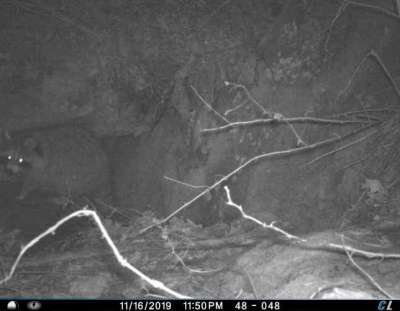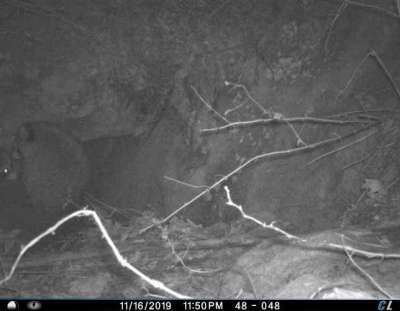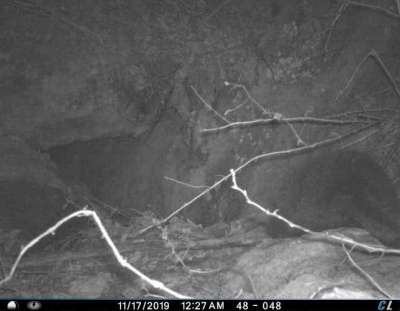In winter, raccoons will sometimes take on roommates. Shared space means shared body heat, and avoiding conflict over desirable real estate. Porcupines may also spend time together in winter dens, although perhaps less graciously; Uldis Roze, in his excellent book, The North American Porcupine, reported that only 12 percent of his study animals shared space, and then only on a temporary basis, with clear signs of irritation such as squawking and showy urine trails.
Which is why I was surprised to find recent evidence from a game camera of two porcupines and two raccoons, repeatedly loitering around the same rock crevice entrance. There are plenty of potential den sites in the area, and as far as I can determine, not many porcupines. There has been squawking, both from within the rocks and at least one time recently, from a nearby tree, but that’s been continuing, off and on, for months. I’d assumed it was commentary about annoying, camera-checking humans.
Roze recorded many instances of raccoons and porcupines perched near each other in apple trees, “without a sign of discord.” His observations jibe with that of a friend, who told me that she recently watched a raccoon walk within a few feet of a porcupine, which was busy gnawing on her porch. The animals ignored each other.
But raccoons and porcupines – and porcupines and porcupines – shacking up together? Maybe they’re not true roommates, just accessing a shared entrance to a complex of spaces beneath the rocks? Or is this a sign from the heavens: the dawning of a new and kinder age? I’m curious to hear of readers’ observations of communal denning, and raccoon/porcupine interactions.





Discussion *